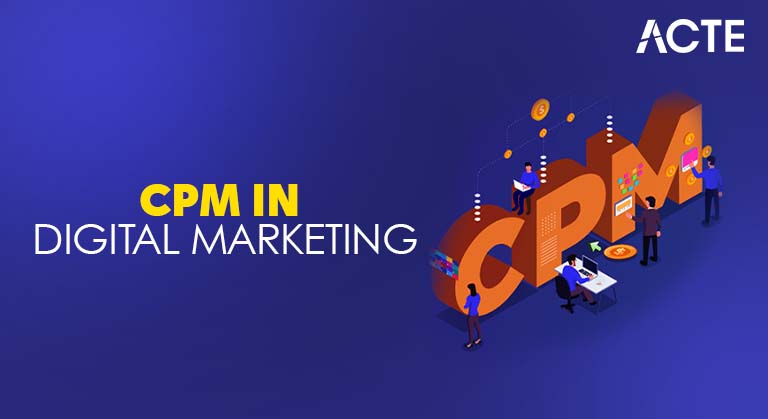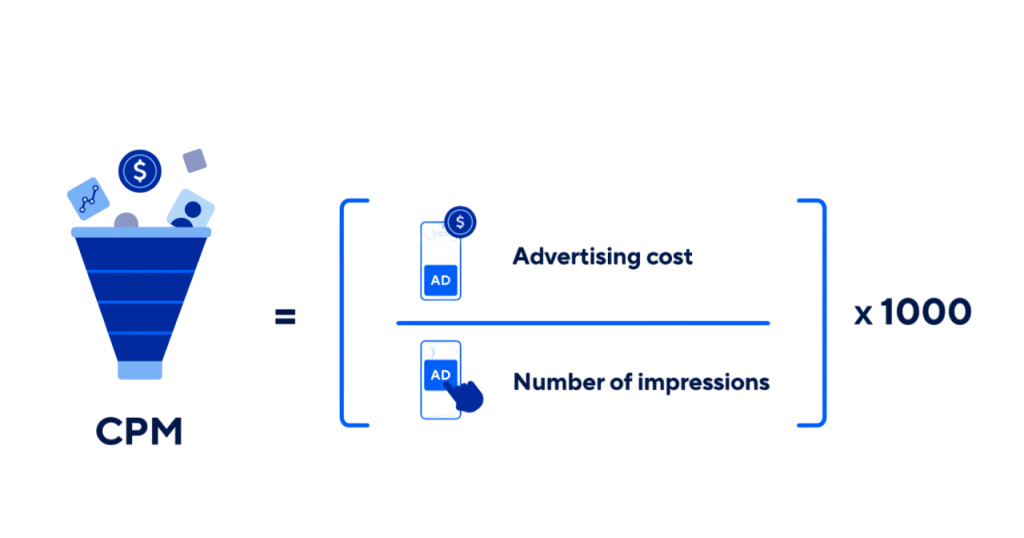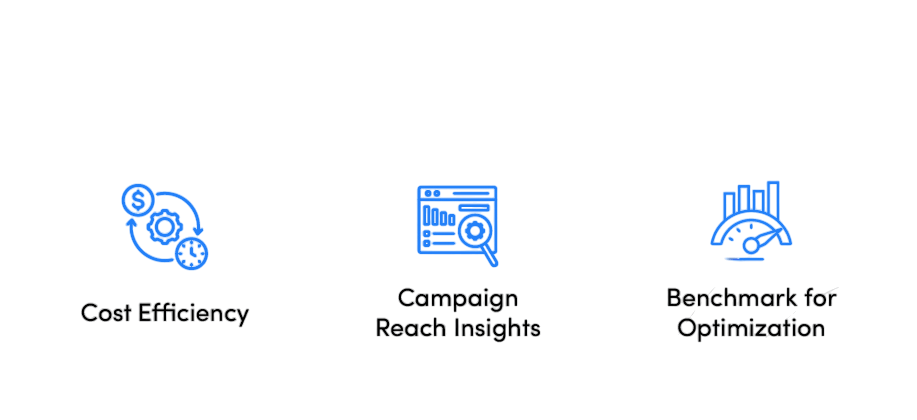
- Introduction
- What is CPM?
- How CPM Works in Digital Marketing
- CPM vs. Other Pricing Models
- Why CPM is Important in Digital Advertising
- When to Use CPM
- Benefits of CPM Advertising
- Factors Influencing CPM Rates
- Conclusion
Introduction
In digital marketing, advertisers have various ways to pay for ads and measure performance. One of the most common and foundational pricing models is CPM, which stands for Cost Per Mille (cost per thousand impressions). Understanding CPM is essential for marketers, advertisers, and businesses aiming to maximize the value of their advertising budgets.This article will explain CPM in Digital Marketing Training , how it works in digital marketing, its benefits, challenges, and best practices for optimizing campaigns using CPM.In the ever-evolving world of digital marketing, understanding how advertising costs are calculated is essential for running effective campaigns. One of the most common pricing models used by advertisers and publishers is CPM, or Cost Per Mille, which refers to the cost of 1,000 ad impressions. Whether you’re running display ads, video campaigns, or social media promotions, CPM plays a critical role in budgeting and measuring campaign reach. In this article, we’ll break down what CPM is, how it works in digital marketing, how it compares to other pricing models like CPC and CPA, and when it’s most effective to use. We’ll also explore the key benefits of CPM and the factors that influence its rates so you can make smarter, data-driven decisions in your advertising strategy.
Ready to Get Certified in Digital Marketing? Explore the Program Now Digital Marketing Online Training Offered By ACTE Right Now!
What is CPM?
CPM, which stands for Cost Per Mille, is a common pricing model in digital marketing where advertisers pay a fixed rate for every 1,000 impressions their ad receives. The term “mille” is derived from Latin and means “thousand.” Unlike models that charge based on user actions such as clicks (CPC) or conversions (CPA) CPM is focused purely on ad visibility. An impression is counted each time an ad is displayed to a user, Digital Marketing Metrics whether or not the user interacts with it. For example, if your ad is shown 10,000 times and the CPM rate is $5, you would pay:

CPM is most commonly used in brand awareness campaigns, where the main goal is to reach a large audience rather than generate immediate clicks or sales. It’s especially prevalent in display advertising, social media platforms, video ads, and programmatic advertising networks. Because it’s impression-based, CPM is often preferred when advertisers want to increase visibility, build recognition, or introduce new products to the market. This model is also important for publishers and content creators who sell ad space, as CPM helps them estimate potential ad revenue based on expected traffic and impressions. However, it’s important to note that CPM doesn’t guarantee engagement or conversions. An ad might be seen 1,000 times, but that doesn’t mean users interacted with it. Therefore, CPM is best used when the objective is reached, not necessarily action.
How CPM Works in Digital Marketing
CPM, or Cost Per Mille, is a digital advertising model where advertisers pay a fixed amount for every 1,000 impressions their ad receives. In this context, an impression is counted each time an ad is displayed to a user, regardless of whether the user interacts with it. This model is designed to maximize visibility, making it ideal for brand awareness campaigns where reach is more important than direct engagement. The CPM pricing model is widely used across various ad formats, including display ads, video ads, social media promotions, and programmatic advertising. Advertisers either set a CPM bid or agree to a fixed rate determined by the platform or publisher. The basic formula to calculate CPM is:
CPM = (Total Cost ÷ Total Impressions) × 1,000.
Alternatively, to find the total cost:Total Cost = (Impressions ÷ 1,000) × CPM Rate.
Platforms like Google Ads, Facebook, and YouTube offer CPM-based campaigns, often optimized for impressions or reach. While CPM helps advertisers reach large audiences, Click-Through Rate in Digital Marketing it doesn’t guarantee clicks or conversions. That’s why it’s often combined with other performance metrics like CTR (Click-Through Rate) and viewability to evaluate overall effectiveness. Because CPM is focused solely on exposure, it’s best suited for campaigns where the primary goal is to introduce a brand, product, or message to a wide audience. It provides a predictable way to budget for visibility, especially when targeting high-traffic websites or broad audience segments.
To Explore Digital Marketing in Depth, Check Out Our Comprehensive Digital Marketing Training To Gain Insights From Our Experts!
CPM vs. Other Pricing Models
- CPC (Cost Per Click): Advertisers pay only when someone clicks the ad.
- CPA (Cost Per Acquisition): Payment is made when a user completes a desired action (purchase, signup).
- CPL (Cost Per Lead): Payment occurs when a lead form is submitted.
- CPM is about paying for exposure, while CPC and CPA are action-based models.
- CPM is ideal for campaigns focused on brand awareness rather than direct response.
- CPC and CPA models often cost more per action but may yield more measurable ROI.
Besides CPM, there are other common Digital Marketing Training advertising pricing models:
Differences:
Why CPM is Important in Digital Advertising
CPM plays a crucial role in digital advertising because it offers a straightforward way for brands to measure and pay for ad exposure. Unlike other pricing models that focus on clicks or conversions, CPM prioritizes reach and visibility, Monetized on your YouTube Channel making it essential for campaigns aimed at building brand awareness and increasing recognition among target audiences. Advertisers can budget effectively since CPM provides a predictable cost structure based on the number of times an ad is seen, which is especially valuable for campaigns seeking to saturate the market or reinforce messaging.

Furthermore, CPM is widely supported across most digital platforms and ad networks, allowing advertisers to easily scale campaigns and access diverse audience segments. It also benefits publishers by providing a reliable revenue stream based on traffic volume and impressions. By focusing on impressions, CPM encourages advertisers to create visually appealing and relevant ads that can capture attention even without immediate clicks. In addition, CPM campaigns provide valuable data for advertisers, helping them analyze reach and frequency two key factors in brand recall and customer engagement. This data can inform future marketing strategies, ensuring budgets are spent efficiently. Overall, CPM is important because it balances cost control with the ability to generate broad awareness, making it a foundational metric in many digital advertising strategies.
Looking to Master Digital Marketing? Discover the Digital Marketing Expert Masters Program Training Course Available at ACTE Now!
When to Use CPM
- Building Brand Awareness: When your goal is to get your brand, product, or message in front of as many people as possible, CPM ensures you pay for visibility, helping increase recognition and recall.
- Launching New Products or Services: CPM is effective when introducing something new to the market and you want to maximize exposure quickly.
- Running Display and Video Ads: These formats typically rely on impressions to measure success, making CPM a natural fit.
- Targeting Large or Niche Audiences: Whether you’re reaching a broad demographic or a specific segment, Content Management System CPM helps deliver ads consistently across the chosen audience.
- Supporting Upper-Funnel Marketing: For campaigns aimed at awareness or consideration stages, where users aren’t expected to convert immediately, CPM provides valuable impressions to nurture leads over time.
- When You Have a Fixed Budget for Reach: CPM allows advertisers to control costs based on the number of impressions, making it easier to plan and allocate budgets.
- Complementing Other Campaigns: CPM can work alongside CPC or CPA campaigns to build awareness before driving or conversions.
Using CPM strategically helps marketers balance cost and exposure, especially in industries or markets where brand familiarity drives long-term success.
Benefits of CPM Advertising
Using CPM offers several benefits:
- Cost-efficiency at scale: Paying for impressions can be cheaper when reaching large audiences.
- Easy budgeting and forecasting: Knowing the cost per 1,000 impressions simplifies planning.
- Brand visibility: Ensures your ad is seen by the target audience, building brand recall.
- Flexibility: Works across various Web Crawlers , ad formats banners, videos, social media posts.
- Wide reach: Helps penetrate mass markets and new audiences quickly.
Factors Influencing CPM Rates
CPM rates vary widely based on:
- Industry: Competitive industries like finance or insurance typically have higher CPMs.
- Audience targeting: Highly specific or premium audiences cost more to reach.
- Geography: CPM in the U.S. or Europe tends to be higher than in developing markets.
- Ad format: Video ads usually command higher CPMs than static banners.
- Seasonality: Advertising demand peaks (e.g., holidays) can increase CPM rates.
- Platform: Google Display Network, Facebook Pixel , LinkedIn, and programmatic platforms have different average CPMs.
Understanding these factors helps optimize budget allocation.
Preparing for Digital Marketing Job Interviews? Have a Look at Our Blog on Digital Marketing Interview Questions and Answers To Ace Your Interview!
Conclusion
CPM remains a fundamental metric and pricing model in digital marketing, especially for brand awareness and reach-focused campaigns. It offers predictable costs for advertisers looking to maximize exposure, build audience recognition, and support broader marketing efforts.While CPM Works in Digital Marketing Training does not guarantee direct response outcomes, it plays a crucial role in the marketing funnel by creating familiarity and interest. Marketers should understand when CPM is appropriate, how to optimize campaigns, Important in Digital Advertising and how to measure success to fully leverage its benefits.For businesses seeking to build long-term brand value, CPM Advertising is an indispensable part of the digital marketing toolkit.




